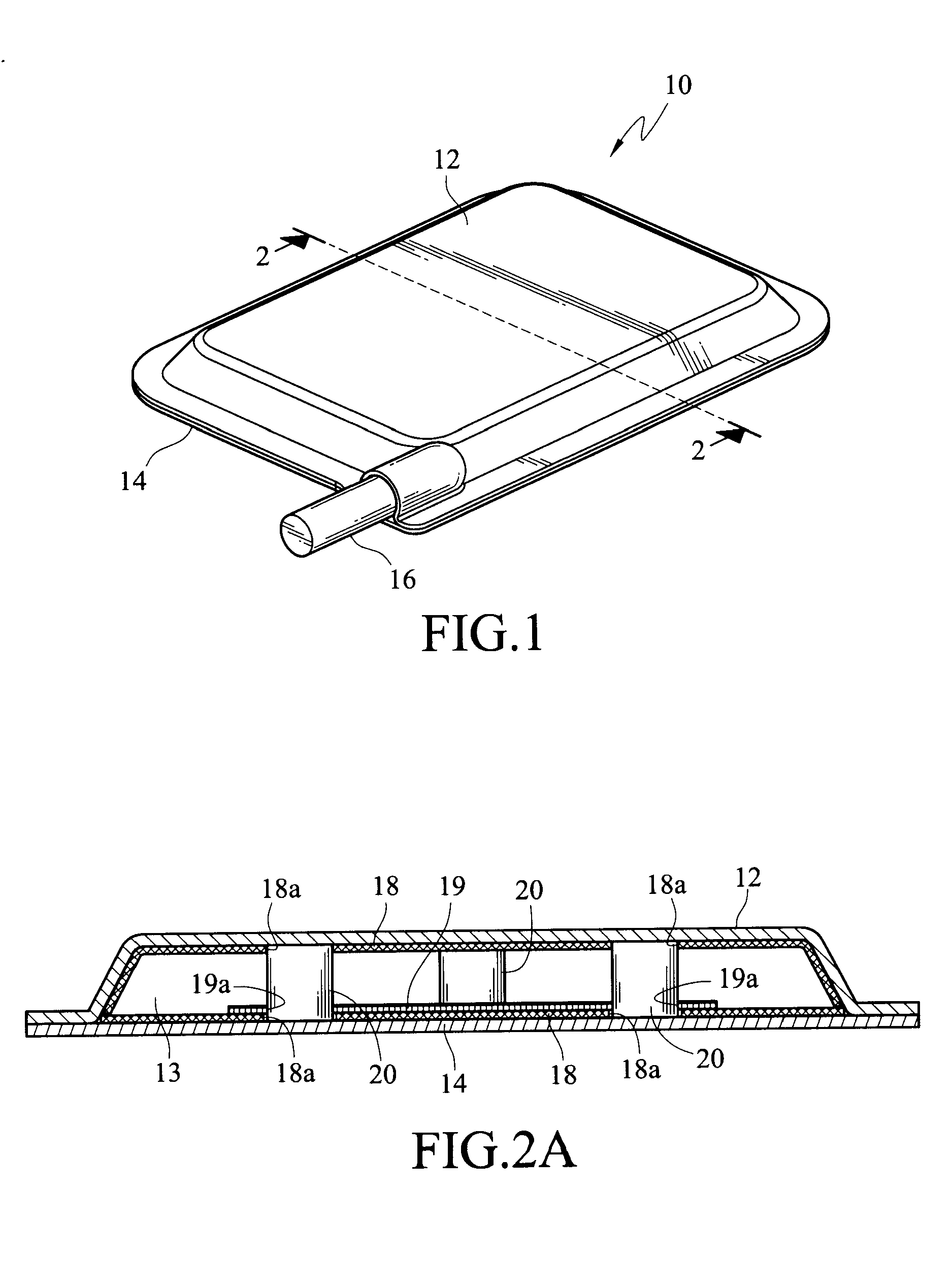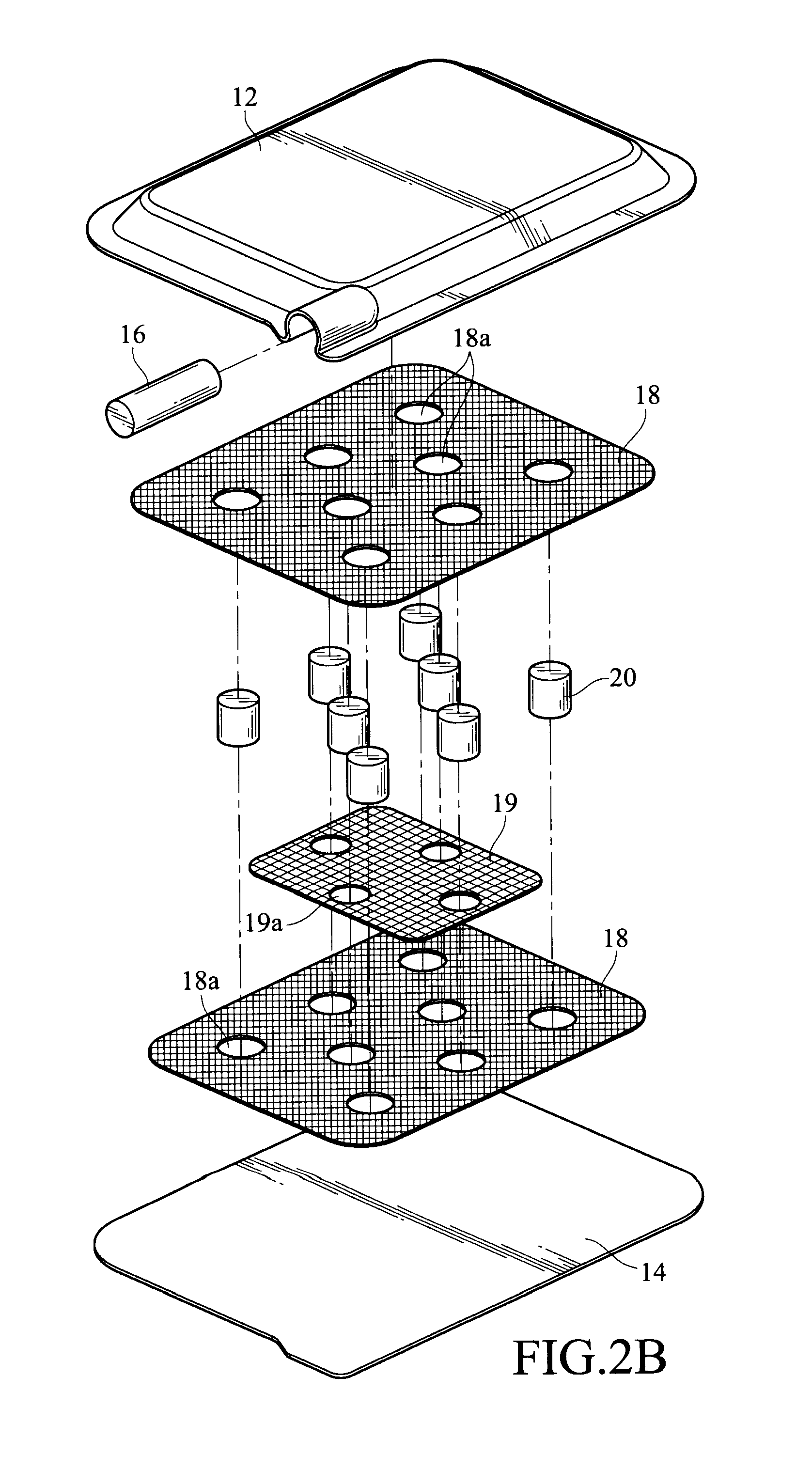Heat spreader with composite micro-structure
a technology of composite microstructure and heat spreader, which is applied in indirect heat exchangers, heat exchange apparatus, lighting and heating apparatus, etc., can solve the problems of ineffective capillary, difficult to enhance capillary and reduce flowing resistance at the same time, etc., to achieve the effect of reducing flowing resistance and enhancing capillary
- Summary
- Abstract
- Description
- Claims
- Application Information
AI Technical Summary
Benefits of technology
Problems solved by technology
Method used
Image
Examples
first embodiment
[0027] the micro-structure layer formed on the inner surface of casing is shown in FIG. 2A and FIG. 2B. The micro-structure which is made of a copper mesh in the embodiments thereinafter can also be made of any other suitable metal, such as aluminum, without any changes to the structure. The copper meshes hereinafter are disclosed for illustration convenience.
[0028] The first metallic mesh 18, or namely, the first structure layer, is substantially formed on all the surfaces of the chamber 13 as a capillary structure for the working fluid circulating therein. The first metallic mesh 18 can be applied using various conventional manufacturing processes, such as welding or diffusion bonding, to attach onto the surface. In the present invention, diffusion bonding is preferably used to form the first structure layer. The second metallic mesh 19, or namely, the second structure layer, is disposed on the first metallic mesh 18 on the lower cover 14 in this embodiment. The second metallic me...
second embodiment
[0034] In the second embodiment, an opening 18b corresponding to the vaporization area is formed on the first metallic mesh 18 to fit the second metallic mesh 19. The second metallic mesh 19 can be embedded within the opening 18b and comes into contact with the first metallic mesh 18 at the periphery. Furthermore, the meshes 18 and 19 can both attach onto the inner surface of the lower cover 14. In other words, the first metallic mesh 18 and the second metallic mesh 19 are disposed on the same surface to ensure transportation (as shown in FIG. 3A).
[0035] In the embodiments as shown in FIGS. 2A, 2B, 3A and 3B, a single mesh 19 is disclosed. Certainly, a plurality of meshes can be applied in the present invention. As shown in FIG. 4 and FIG. 5, two meshes 19′a and 19′b are stacked to form the second metallic mesh 19′. In this case, the meshes 19′a and 19′b can have differently or similarly sized cavities. Preferably, the meshes 19′a and 19′b should be stacked at different orientations...
PUM
 Login to View More
Login to View More Abstract
Description
Claims
Application Information
 Login to View More
Login to View More - R&D
- Intellectual Property
- Life Sciences
- Materials
- Tech Scout
- Unparalleled Data Quality
- Higher Quality Content
- 60% Fewer Hallucinations
Browse by: Latest US Patents, China's latest patents, Technical Efficacy Thesaurus, Application Domain, Technology Topic, Popular Technical Reports.
© 2025 PatSnap. All rights reserved.Legal|Privacy policy|Modern Slavery Act Transparency Statement|Sitemap|About US| Contact US: help@patsnap.com



